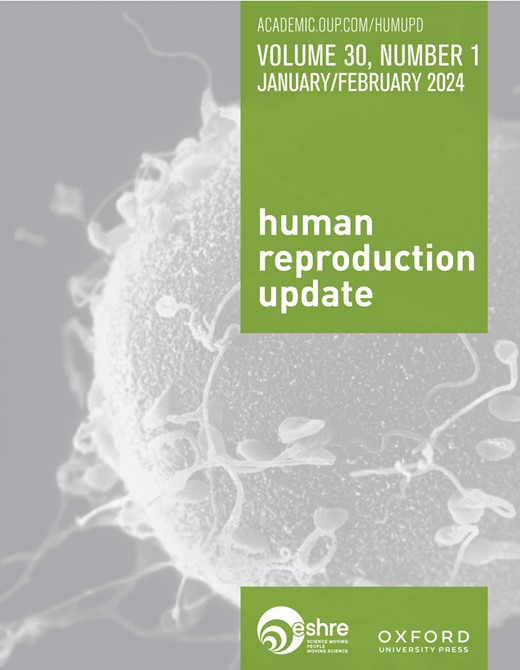宫外和子宫异位妊娠的诊断和治疗。
IF 16.1
1区 医学
Q1 OBSTETRICS & GYNECOLOGY
引用次数: 0
摘要
在过去的二十年中,我们已经巩固了我们对异位妊娠的流行病学和危险因素的了解。微创手术技术现已广泛应用,腹腔镜手术被认为是宫外异位妊娠最好、最安全的手术治疗方法。根据十年前发表的随机试验的证据,腹腔镜输卵管切除术被认为是输卵管异位妊娠的最佳手术治疗方法。然而,随着手术技术的进步和手术技巧的提高,输卵管切除与保留的适当性受到越来越多的关注。在组织和提供对出现妊娠早期并发症的妇女的护理方面的改进,加上超声成像质量的提高和更广泛的使用,导致发现小的失败异位妊娠的能力增加,这在过去是不可能诊断的。许多这样的怀孕注定是自发的,不需要任何干预。在这种情况下,避免过度治疗和潜在的医源性伤害的必要性促进了将预期管理引入主流临床实践。这代表了宫外孕妇女护理的关键发展之一。相比之下,甲氨蝶呤医疗管理的有效性一直受到质疑。近年来另一个重要的发展是宫腔外但在子宫范围内的异位妊娠的患病率迅速上升,其中最大的负担来自剖腹产疤痕异位妊娠。这促进了异位妊娠的新术语和分类的发展,目的是提高对这些日益普遍的类型的认识,并尽量减少误诊的风险。与子宫外异位妊娠相比,子宫异位妊娠更难以诊断和治疗,并且还与产妇发病率、死亡率和不良生殖结果增加有关。子宫异位妊娠所特有的另一个挑战是,尽管极端早产的风险很高,但它们有可能发展到胎儿生存能力。这就要求妇女和临床医生做出艰难的决定,即是否应该终止这些妊娠,以保护孕产妇健康,尽管有可能产生良好的胎儿结局。在此,我们提供了一个全面的回顾已发表的文献,总结新的证据,并探讨有关异位妊娠的新主题。我们的目的是提供现代分类和诊断的概述,总结可用的治疗方案和建议,并强调长期结果,包括异位妊娠的潜在心理影响。我们审查了目前的知识差距,并概述了进一步研究的重点。本文章由计算机程序翻译,如有差异,请以英文原文为准。
The diagnosis and management of extrauterine and uterine ectopic pregnancy.
In the last two decades, we have consolidated our knowledge of the epidemiology and risk factors for ectopic pregnancies. Minimally invasive surgical skills are now widespread, and laparoscopic surgery is recognized as the best and safest operative treatment for extrauterine ectopic pregnancies. Based on the evidence from randomized trials published a decade ago, laparoscopic salpingectomy is accepted as the optimal surgical treatment for tubal ectopic pregnancy. However, with recent advances in surgical techniques and improvement in surgical skills, the appropriateness of tubal removal versus conservation is under increasing scrutiny. Improvements in the organization and provision of care for women presenting with early pregnancy complications, in conjunction with better quality and wider use of ultrasound imaging, have resulted in an increased ability to detect small failing ectopic pregnancies, which were impossible to diagnose in the past. Many of these pregnancies are destined to resolve spontaneously without the need for any intervention. The necessity to avoid overtreatment and the potential for iatrogenic harm in such cases has facilitated the introduction of expectant management into mainstream clinical practice. This represents one of the key developments in the care for women with ectopic pregnancies. By contrast, the efficacy of medical management with methotrexate has been questioned. Another important development in recent years has been a rapid rise in the prevalence of ectopic pregnancies that are located outside the uterine cavity but within the confines of the uterus, the largest burden of which is from Caesarean scar ectopic pregnancies. This has promoted the development of new terminology and classification of ectopic pregnancies, with the aim of raising awareness of these increasingly prevalent types and minimizing the risk of misdiagnosis. In comparison to ectopic pregnancies outside the uterus, uterine ectopic pregnancies are more difficult to diagnose and manage, and are also associated with increased maternal morbidity, mortality, and adverse reproductive outcomes. Another challenge, which is peculiar to uterine ectopic pregnancies, is their potential to progress to reach foetal viability, albeit with a high risk of extreme prematurity. This requires women and clinicians to make difficult decisions about whether these pregnancies should be terminated to protect maternal health, despite some possibility of a good foetal outcome. Herein, we provide a comprehensive review of published literature to summarize new evidence and explore emerging themes with respect to ectopic pregnancy. Our aim is to provide an overview of modern classification and diagnosis, to summarize available treatment options and recommendations, and to emphasize longer-term outcomes, including the potential psychological impact of ectopic pregnancy. We examine current knowledge gaps and outline priorities for further research.
求助全文
通过发布文献求助,成功后即可免费获取论文全文。
去求助
来源期刊

Human Reproduction Update
医学-妇产科学
CiteScore
28.80
自引率
1.50%
发文量
38
期刊介绍:
Human Reproduction Update is the leading journal in its field, boasting a Journal Impact FactorTM of 13.3 and ranked first in Obstetrics & Gynecology and Reproductive Biology (Source: Journal Citation ReportsTM from Clarivate, 2023). It specializes in publishing comprehensive and systematic review articles covering various aspects of human reproductive physiology and medicine.
The journal prioritizes basic, transitional, and clinical topics related to reproduction, encompassing areas such as andrology, embryology, infertility, gynaecology, pregnancy, reproductive endocrinology, reproductive epidemiology, reproductive genetics, reproductive immunology, and reproductive oncology. Human Reproduction Update is published on behalf of the European Society of Human Reproduction and Embryology (ESHRE), maintaining the highest scientific and editorial standards.
 求助内容:
求助内容: 应助结果提醒方式:
应助结果提醒方式:


